Belgian Dubbels, Tripels, and Quads are three distinct types of beers that are known for their unique flavors and brewing processes.
These beers originated in monasteries of Belgium and have since become popular worldwide among beer enthusiasts.
A table showing the differences between Belgian Dubbels, Tripels, and Quads can give a better understanding of each type:
| Type of Beer | Alcohol Percentage | Color | Flavor |
|---|---|---|---|
| Dubbels | 6-7% | Dark Amber | Fruity and Malty |
| Tripels | 8-9% | Light Golden or Blonde | Spicy and Fruity |
| Quads | Over 10% | Deep Ruby or Brown | Sweet with hints of Dark Fruits |
There is more to these beers than just alcohol percentage and flavor. Each type has a unique brewing process that contributes to its distinct characteristics. Additionally, Dubbels were traditionally brewed for monks’ consumption as part of their daily meals.
I remember my trip to Belgium when I tried each type of beer at various breweries. The flavors were unlike anything I had tasted before.

The care put into crafting each beer was evident from the first sip. It was fascinating to learn about the history and culture behind these iconic Belgian beers.
Belgian Dubbels: the perfect excuse to drink a beer for breakfast, lunch, and dinner.
Belgian Dubbels
To understand Belgian Dubbels better, learn about their Appearance, Taste and Flavor, and Brewing Process. Each sub-section provides insight into the characteristics that make Belgian Dubbels unique.
Appearance
The Visual Aspects of Belgian Dubbels
Belgian Dubbels are known for their stunning appearance and rich color palette. These beers have a dark brown hue with reddish highlights, and they produce a thick, creamy head when poured into a glass. The foam may vary in color from beige to light tan depending on the type of malt used.

Belgian Dubbels are not only pleasing to the eye but also possess subtle nuances that differentiate them from other beer styles. For example, some brewers add candy sugar to their recipes, which results in a unique caramel-like flavor and adds to the beer’s complexity.
Indulging in this flavorful brew is an experience not to be missed. With its complex body and rich aroma, you’ll find yourself savoring every sip of Belgian Dubbel you’re lucky enough to taste.
Don’t miss out on the opportunity to sample one of Belgium’s most revered beer styles. Try a Belgian Dubbel today and see what all the fuss is about! If beer could be a date, a Belgian Dubbel would be the perfect mix of sweet and spicy, with just the right amount of alcohol to make things interesting.
Taste and Flavor
Belgian Dubbels provide a unique and complex flavor that offers a range of sensory experiences.
The taste profile is rich, deep and layered, offering complex taste sensations that can often be described as a mix between nutty figs and dark raisins with a subtle sweetness.
- They have a distinct aroma of dried fruits, hints of caramel, toffee and spices such as clove, coriander and anise.
- Belgian Dubbels offer bold malty characteristics which vary in intensity depending on the brewer’s recipe.
- The dark coloration adds depth to the flavor profile while also offering toasty and roasty notes.
- Yeast plays an important role in developing unique flavors and aromas in Belgian Dubbels. They are brewed using distinctive strains of yeast that produce spicy phenols, fruity esters reminiscent of ripe banana or pear, and sometimes even chocolate or coffee-like notes.
- Some variations may have added ingredients such as herbs or candi sugar that result in further complexity to the taste profile.
Each brewery has its own take on the recipe for this style of beer; some adding ingredients not typically associated with beer-making for exciting new flavor combinations.
Belgian Dubbels can also range from moderately sweet up to mildly bitter finishing with refreshing carbonation.
It is debated whether or not monks first brewed this style of beer in Belgium. Still, it is believed Westmalle Abbey created one of the first recipes for Trappist Dubbel dating back to 1856.
From boiling the wort to fermenting the yeast, the brewing process of Belgian Dubbels is like a delicious chemistry experiment gone right.
Brewing Process
To delve into the crafting of Belgian Dubbels, we must explore its distinctive Brewing Method. This process entails a multifaceted approach that begins with the selection of premium ingredients such as malted barley.
The mixture is then boiled and infused with specific hops and spices before fermenting. After the fermentation process, the beer undergoes a secondary fermentation stage where it acquires its unique flavour profile.
The brewing process can be comprehended better through the following table:
| Stage | Description |
|---|---|
| Mashing | Crushed grains are mixed with hot water to form a sweet liquid known as wort. |
| Boiling | Hops are added to balance sweetness while other spices are incorporated for an enhanced flavour. |
| Fermentation | Yeast is combined with wort in a vat and allowed to convert sugars to alcohol, creating carbon dioxide as well. |
| Conditioning | The beer undergoes maturation, clarifying and settling before being packaged in bottles or kegs for distribution. |
It should be noted that Belgian Dubbels are known for their rich caramel colour which comes from darker specialty malts used during this phase of brewing.
Intricate factors such as caramelization levels of malt and types of yeast used can determine the aromatic notes and taste consistency of your creation, making each batch unique.
Ready to embark on this tantalizing journey? Why not attempt brewing a Belgian Dubbel yourself? With careful attention to detail and precision in technique, you could become part of a legacy steeped in tradition. Don’t miss out on this opportunity!
Belgian Tripels: when one Dubbel just isn’t enough to drown out your problems.
Belgian Tripels
To truly appreciate Belgian Tripels, understanding their appearance, taste and flavor, and brewing process is essential. These factors contribute to the unique expression of the style.
Appearance
Belgian Tripels are known for their striking and unique appearance. The visual aspect of this beer style is crucial and indicative of its quality.

The color typically ranges from pale straw to deep gold with varying degrees of haze or clarity. The head is often white or off-white, thick and persistent. Carbonation is high, resulting in a lively effervescence.
Beyond color and carbonation levels, there are other unique details that contribute to the overall appearance of a Belgian Tripel. One notable feature is the use of bottle conditioning, where natural carbonation occurs within the bottle instead of relying on forced carbonation methods.
The history of Belgian Tripels begins in the 1930s when breweries were developing stronger beers to compete with spirits.
It was not until the 1950s when Westmalle Brewery introduced their version that it became commercially popular. Today, Belgian Tripels remain one of the most celebrated beer styles due to their complex flavors and stunning appearance.
Taking a sip of a Belgian Tripel is like biting into a fresh loaf of bread, if that bread were infused with the soul of a Belgian brewmaster.
Taste and Flavor
Belgian Tripels are known for their complex and bold taste, with an underlying sweetness balanced by a sharp bitterness. The flavor is often described as spicy or fruity, with notes of clove, banana, and pear. The aroma is equally compelling with herbs and spices that evoke an earthy sensation. A well-made Belgian Tripel will have a dry finish, leaving the palate clean and refreshed.
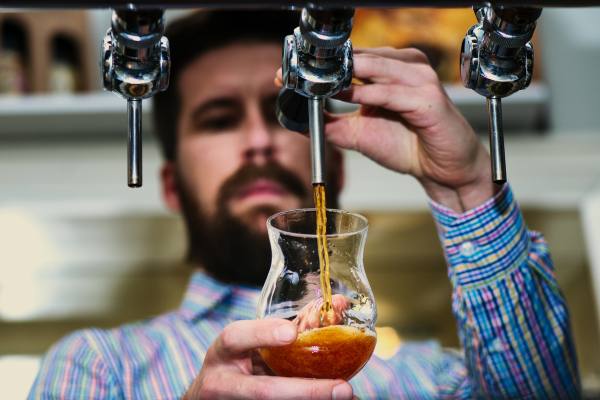
The flavor profile of Belgian Tripels is achieved through careful brewing techniques that incorporate unique yeast strains, high alcohol content, and specialty malt. Tripels are known for their high carbonation levels that add to the experience by creating a tingling sensation on the tongue.
What sets Belgian Tripels apart from other beers is its range of flavors that evolve with each sip. The complexity of flavors ensures that no two sips taste exactly alike. Each brewer has their special recipe which adds to the uniqueness of every batch produced.
Legend has it that Belgian tripels were first brewed in the 14th century by monks who used this beer to sustain themselves during fasting days when they could not consume solid food. It was also believed to possess healing properties for various ailments ranging from insomnia to depression. Today, Belgian Tripels continue to hold a place in the hearts of beer enthusiasts around the world who appreciate the nuanced flavor profile created by centuries-old brewing traditions.
The brewing process for Belgian Tripels is like trying to juggle six beer mugs while blindfolded – it’s a delicate balance, but oh so rewarding when done right.
Brewing Process
In the art of crafting Belgian Tripels, the production process is crucial. To create this renowned brew, a meticulous brewing process employing time-honored techniques must be followed. The intricacy and detail of the brewing process for Belgian Tripels can be exemplified in the table below:
| Brewing Process Step | Description |
|---|---|
| Mashing | Mixing crushed grains with hot water to form a sweet liquid called wort |
| Boiling | Adding hops to the wort and boiling to release bitterness, flavor, and aroma |
| Fermentation | Allowing yeast to convert sugars in the wort into alcohol |
| Conditioning | Aging beer in cool cellars for weeks or months to enhance taste and clarity |
Belgian Tripels are unique in their composition, requiring specific brewing methods. Their signature flavorful taste arises from a blend of pilsner malt, simple sugars, distinctive Belgian yeast strains, and flavorful hops like Saaz or Hallertau.
A fact about Belgian tripels: They originated in monasteries centuries ago. Monks brewed these high-alcohol beers as a part of their meals or used them as offerings to provide sustenance for those less fortunate. Belgian Quads: where one is never enough and two is always too many.
Belgian Quads
To understand Belgian Quads, you need to know more than just their taste. This section dives deeper into the brewing process, appearance, taste, and flavor of Belgian Quads. By exploring these aspects, you’ll learn more about what makes them distinct from other Belgian beers and why they’re so beloved by beer enthusiasts.
Appearance
This section delves into the visual characteristics of Belgian Quads.
A Table shows significant details about the appearance of the Belgian Quad beer style. The beer is known for its dark color, ranging from deep copper to brown, and a thick head that retains well. It is medium to full-bodied with high carbonation, and it often has a cloudy haze due to bottle conditioning.
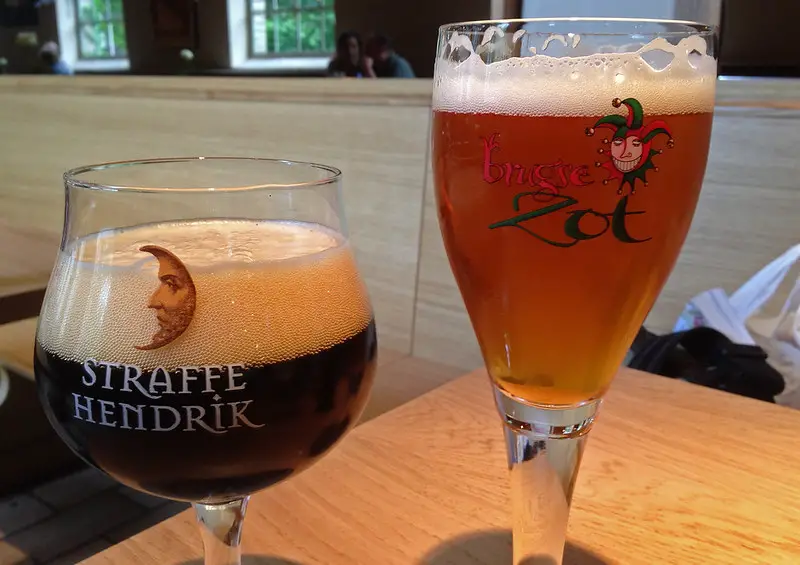
In addition, Belgian Quads are traditionally served in goblet or chalice glassware, which accentuates their impressive appearance and aroma. Furthermore, these beers may have a variety of fruit and spice notes that are visually distinct.
Belgian Quadrupels have been brewing under Trappist supervision since the early 19th century at Westvleteren Abbey in Belgium.
Overall, Belgian Quads showcase a stunning aesthetic with deep colors and unique bottle-conditioning characteristics that set them apart from other beer styles.
With flavors ranging from caramel to dark fruit, Belgian Quads are the Taylor Swift of beers – they have a loyal following and are never out of style.
Taste and Flavor
The Flavor Profile of Belgian Quads
Belgian quads are known for their rich, complex flavor profile that can be described as malty, fruity, and spicy. These strong beers often have a high ABV content, which further intensifies their bold and robust taste.
Below is an overview of the taste and flavor characteristics that define Belgian quads:
| Characteristic | Description |
|---|---|
| Malty | Belgian quads typically have a rich maltiness with flavors reminiscent of toffee, caramel, and bread crusts. The malt also provides a smooth mouthfeel that can balance out the bold flavors. |
| Fruity | These beers often contain notes of dark fruits such as plums, raisins, figs, and cherries. The fruitiness adds complexity to the beer’s flavor profile and can help cut through the sweetness from the malt. |
| Spicy | Belgian yeasts used in quad brewing give off a distinctive spicy quality with clove and pepper notes. This spiciness adds depth to the beer’s flavor profile and helps to counteract any potential cloying sweetness. |
Belgian quads also commonly exhibit a warming sensation due to their high alcohol content. This warmth tends to build gradually after each sip.
Pro Tip: To fully appreciate all the nuances in Belgian quads’ taste and flavor, make sure to serve them at proper temperatures – around 50-55 °F (10-13 °C) is ideal.
“Brewing a Belgian Quad is like making a pact with the devil; it may take some time and effort, but the end result is completely worth selling your soul.”
Brewing Process
Exploring the Art of Craft Beer Production
Craftsmanship is at the forefront of Belgian Quads, a complex and bold style of beer that has gained popularity in recent years. The brewing process for this beer involves precise steps to create a unique flavor profile and color.
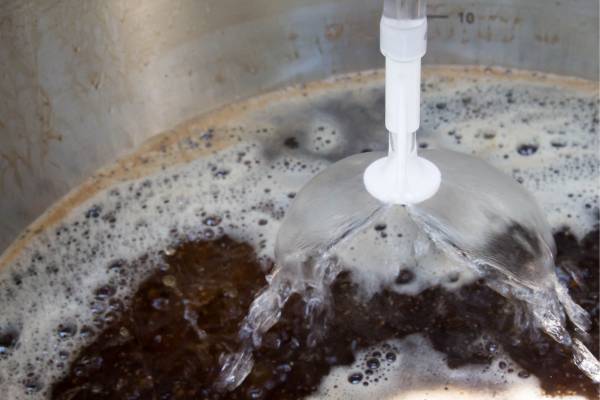
One important aspect of brewing Belgian Quads is achieving the desired ABV (Alcohol By Volume), which is typically between 9-12%. This is achieved by using several types of malted grains, such as Pilsner, Munich, and Vienna.
During the mash process, the malted grains are crushed and mixed with hot water to activate enzymes that convert the starches into fermentable sugars. This process takes roughly one hour.
Afterward, the wort (liquid developed during mashing) is boiled with hops for several hours to impart bitterness and aroma. Aromatic spices such as coriander, orange peel, or black pepper can be added during boiling or fermentation to enhance the flavor.
Fermentation plays an important role in creating Belgian Quads’ unique taste profile. Ale yeast strains are used at higher temperatures than other beer styles to promote ester production. Often they are fermented in stages over several months to bring out complex flavors from these yest strains.
Historically speaking, it’s believed that Trappist monks developed this style of beer centuries ago. They brewed it as a nourishing source of calories during fasting periods but enjoyed the richness throughout the year. Today, Belgian Quads continue to tantalize taste buds worldwide with their robustness and character.
If Dubbels and Tripels are a warm-up to your beer game, then Quads are the grand finale that leaves you feeling perfectly Belgian.
Comparison of Belgian Dubbels, Tripels, and Quads
To compare Belgian Dubbels, Tripels, and Quads, you need to understand the distinguishing features of each beer type. Alcohol content, color, and carbonation levels differ among the three. In order to accurately distinguish the three, highlighting the unique attributes of each beverage is necessary.
Alcohol Content
For those interested in the strength of Belgian Dubbels, Tripels, and Quads, information on their ABV is essential. These beers are known for their high alcohol content and complex flavors.
| Beer Type | ABV Range |
| Dubbels | 6% – 8% |
| Tripels | 8% – 10% |
| Quads | 10% – 14% |
It is interesting to note that while these beers have an impressive level of alcohol, each type has a unique range between which it falls. Other factors such as brewing ingredients also play a role in the final ABV.
According to BeerAdvocate, the strongest Quad beer from Belgium is Bush de Noël Premium, with an ABV of 13%.
Who needs a painting when you have a Belgian Dubbel, Tripel, or Quad? These brews are like a masterpiece in a glass.
Color
The Distinctive Hues of Belgian Dubbels, Tripels, and Quads
The colors of Belgian Dubbels, Tripels, and Quads are distinct and indicative of their unique characters. Belgian Dubbels typically range from reddish-brown to dark brown while Tripels present a golden hue with hints of orange or amber. Quads are darker than Dubbels with a deep mahogany hue that often appears almost black.
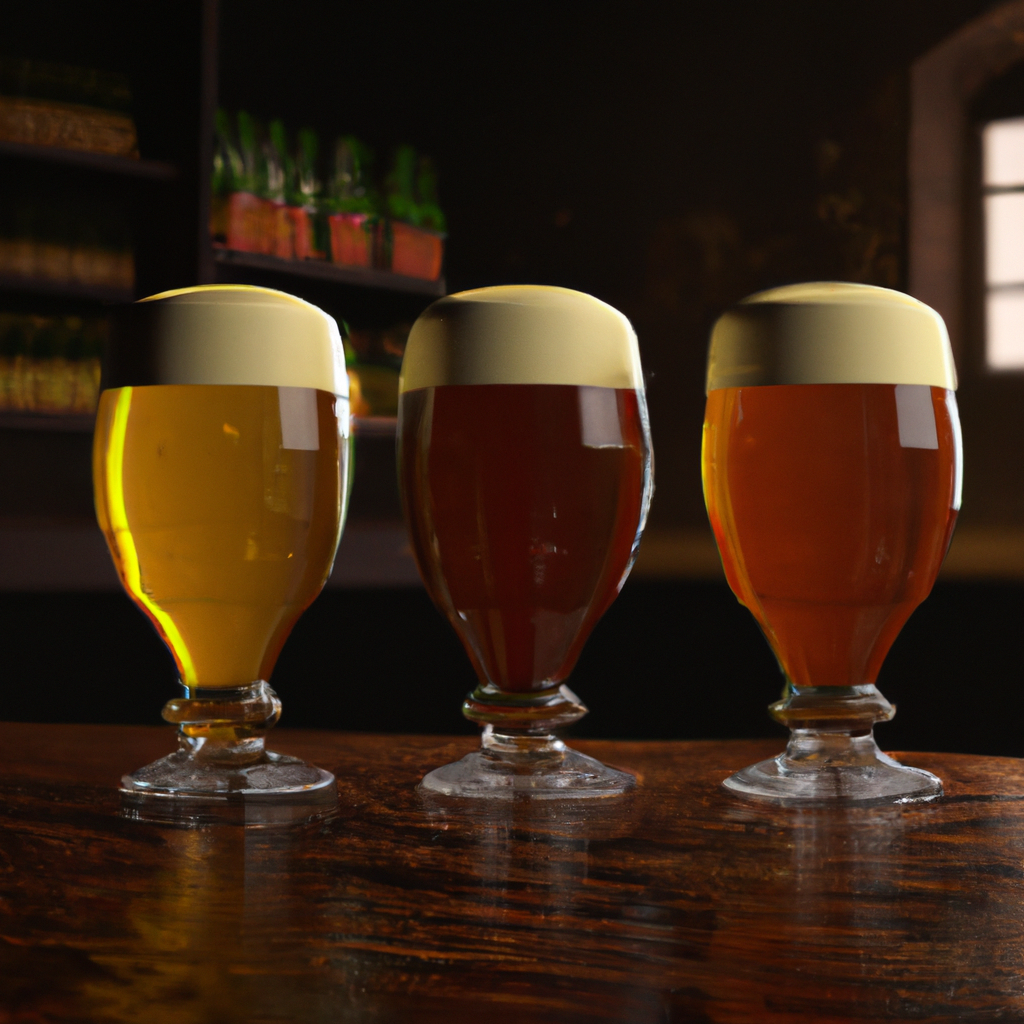
These shades are not merely aesthetic but can also offer insights into the beer’s flavor profile. The rich caramel and toffee notes that characterize Dubbels correlate with the reddish-brown tones while the spicy or fruity accents associated with Tripels are reflected in brighter golden hues. Meanwhile, the dark fruit flavors that distinguish Quads align with their deeper coloring.
While these generalizations hold true for most dubbels, tripels, and quads, it is essential to note that there can be variations within each category based on specific recipes or brewing techniques.
If you’re a beer enthusiast looking to explore new styles, don’t miss out on experiencing the full spectrum of Belgian dubbels, tripels, and quads by simply judging them based on their color. Indulge your senses in these distinctive brews’ nuanced flavors and aromas for a truly memorable tasting experience.
Why settle for just fizz when you can have the bubbly bliss of a perfectly carbonated Belgian dubbel, tripel, or quad?
Carbonation
Effervescence Analysis:
Effervescence represents the bubbles and fizz present in beverages. Belgian Dubbels, Tripels and Quads are famous for their complex flavors imparted by high carbonation levels.
A comparative analysis based on carbonation levels is presented in the table below:
| Beer Type | Carbonation Level (CO2 volumes) |
|---|---|
| Dubbel | 1.9-2.5 |
| Tripel | 1.9-2.8 |
| Quad | 2.3-3.0 |
Apart from the carbonation level, other parameters also affect fizziness in beers, such as pouring temperature and techniques, bottle conditioning, and type of yeast used.
It is essential to handle the bottles with care to prevent creating a frothy head while pouring the beer into a glass. Chill them at an appropriate temperature to enhance taste and maximize effervescence while maintaining stability.
Therefore, consumers who enjoy highly carbonated Belgian-style beer should be aware of these variables when serving it to achieve optimal drinking pleasure without wasting any of its bubbly goodness.
Why settle for a regular meal when you can pair it with a Belgian dubbel, tripel, or quad and take your taste buds on a wild ride?
Food Pairing with Belgian Dubbels, Tripels, and Quads
To pair your Belgian Dubbels, Tripels, and Quads perfectly with your food, you need to understand the nuances of each beer type. In this section, ‘Food Pairing with Belgian Dubbels, Tripels, and Quads’, you will master food pairing with these beer types. The sub-sections, Cheese, Seafood, and Meat will help you achieve the most optimal combinations.
Cheese
Savory Dairy Options
A delightful range of dairy products can complement the flavors of Belgian Dubbels, Tripels, and Quads. Cheeses with nutty undertones or tangy finish are ideal for pairing. Try mild Gouda with your dubbels, sharp cheddar with your tripels and rich blue cheese with your quads.
Some perfect savory dairy options to consider:
| Cheese | Dubbel Pairing | Tripel Pairing | Quad Pairing |
|---|---|---|---|
| Gouda | Mild | – | – |
| Cheddar | – | Sharp | – |
| Blue Cheese | – | – | Rich |
Distinctive Condiments
To enhance the richness of Belgian beer, choose condiments that balance well on the palate. Mustards, fruit jams and honey pair pleasingly with these beer types. The sweetness from jam or honey balances out the bitterness in the alcohol creating a harmonizing effect.
Trendy Fruit accompaniments
Consider adding dried fruits such as apricots, raisins and figs to complement Belgian beer’s fruity aroma. These fruits add a dimension of flavors that highlight specific qualities in each type of beer. Dried apricots have a pleasant tanginess that pairs well with dubbels while raisins’ bittersweetness complements quads perfectly.
Gingerbread Cookies and Dubbel Delight
The combination of dubbel beer and gingerbread cookies is uniquely satisfying to the taste buds. The warm spices in gingerbread elevate dubbel’s malty flavor profile making it the perfect match for this holiday dessert favorite.
Pairing seafood with Belgian beers is like a match made in culinary heaven – or should we say, under the sea?
Seafood
This category of Belgian beer pairs best with light to medium seafood dishes. The delicate flavors of crab cakes and scallops complement the sweetness and fruitiness of Dubbels, Tripels, and Quads. Additionally, mussels and clams in a white wine sauce pair well with their complexity.
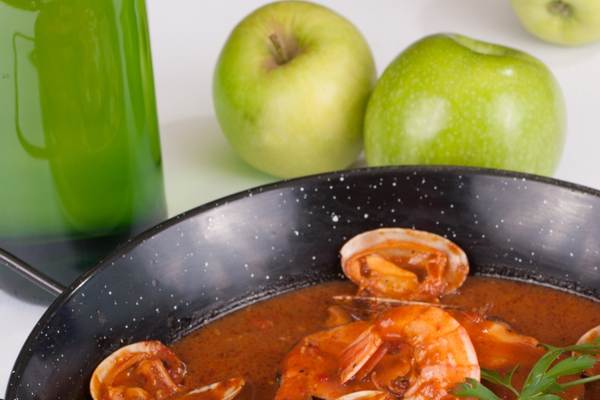
For a unique pairing, try Grilled Shrimp with Chimichurri sauce alongside your Belgian ale. It creates a perfect blend of charred, herbaceous notes that amplify the earthy tones present in the beer.
Pro Tip: For an exceptional experience, make sure your seafood dish is not too overpowering to let the beer’s flavor shine through.
For those who think meat and potatoes is the ultimate pairing, clearly they haven’t tried a juicy steak with a Belgian quad.
Meat
For the carnivorous, here are some delectable meat options to pair with Belgian Dubbels, Tripels, and Quads.
| Meat | Beer Pairing |
|---|---|
| Beef | Dubbel |
| Lamb | Tripel |
| Pork | Quad |
Did you know that game meat like venison or bison would also make an excellent pairing with these rich and complex beers?
Brussels sprouts sauteed in bacon fat or braised short ribs with a cherry sauce would make for a delicious side dish to round out your meal.
Don’t miss out on the opportunity to elevate your meal by carefully selecting your beer and meat pairings. Treat yourself to a culinary experience that indulges all of your senses.
Bottom line: if you’re pairing food with Belgian dubbels, tripels, or quads, you’re doing it right.
Conclusion
Belgian Dubbels, Tripels, and Quads are distinct styles of beer that originate from Belgium. They differ in terms of alcohol content, ingredients used, and brewing methods employed. Dubbels have a lower alcohol content than both Tripels and Quads, and are characterized by their dark color and rich flavors. Tripels are lighter in color but have a higher alcohol content than Dubbels. Quads have the highest alcohol content of the three styles and can be identified by their full-bodied flavor profile.
In addition to their varying composition, each style has a unique history behind its creation. Dubbels were first brewed by Trappist monks in the Middle Ages as a way to nourish themselves while they fasted. Tripels were created centuries later as a stronger version of Dubbels. Finally, Quads were invented by Belgian breweries in the 20th century as an even stronger style of beer.
It’s important to note that while these beer styles may seem similar at first glance, they offer distinct characteristics that set them apart from one another. By understanding the differences between Belgian Dubbels, Tripels, and Quads, beer enthusiasts can appreciate each style for its unique taste and history.
Frequently Asked Questions
1. What is the difference between a Belgian Dubbel and a Tripel?
A Dubbel is a Belgian beer that is characterized by its dark color, rich maltiness, and notes of dark fruit and caramel. It typically has an ABV of 6-8%. A Tripel, on the other hand, is a lighter beer with a pale color, high carbonation, and notes of spice and fruit. It typically has an ABV of 8-10%.
2. What is a Belgian Quad?
A Quad (or Quadrupel) is a Belgian beer that is similar to a Dubbel but has a higher ABV and a more complex flavor profile. It is typically dark in color and has notes of raisins, figs, and toffee. It has an ABV of 10-12%.
3. What ingredients are used in Belgian Dubbels, Tripels, and Quads?
Belgian Dubbels, Tripels, and Quads are typically brewed with a combination of malted barley, hops, yeast, and water. Additional ingredients such as fruit, spices, and sugar may also be added to give them their distinct flavor profiles.
4. How should I serve Belgian Dubbels, Tripels, and Quads?
Belgian Dubbels, Tripels, and Quads should be served in a tulip or goblet glass at a temperature of around 50-55°F. They are best enjoyed at a slow pace to savor their complex flavors.
5. What is the history behind Belgian Dubbels, Tripels, and Quads?
Belgian Dubbels and Tripels have been brewed in Belgium for centuries, with the Trappist monks playing an important role in their development. Quads are a more recent addition to the Belgian beer scene, with the first one being brewed in the 1980s.
6. Are Belgian Dubbels, Tripels, and Quads high in alcohol?
Yes, Belgian Dubbels, Tripels, and Quads are all high in alcohol content. Dubbels typically have an ABV of 6-8%, Tripels have an ABV of 8-10%, and Quads have an ABV of 10-12%. It is important to drink them responsibly and in moderation.



